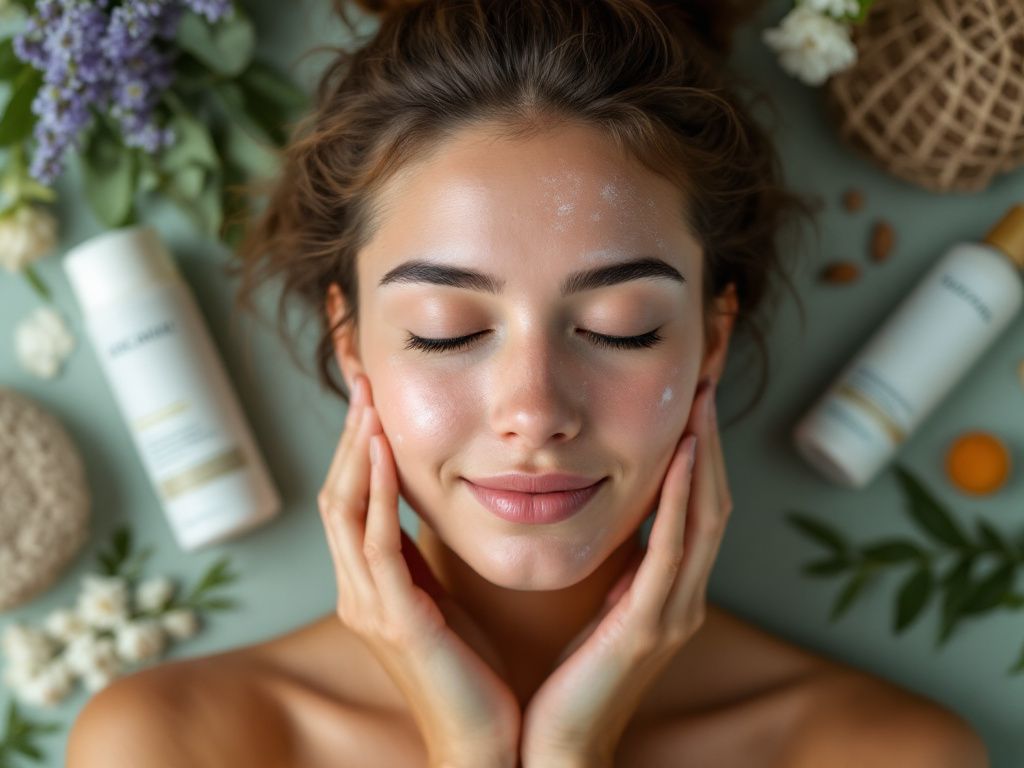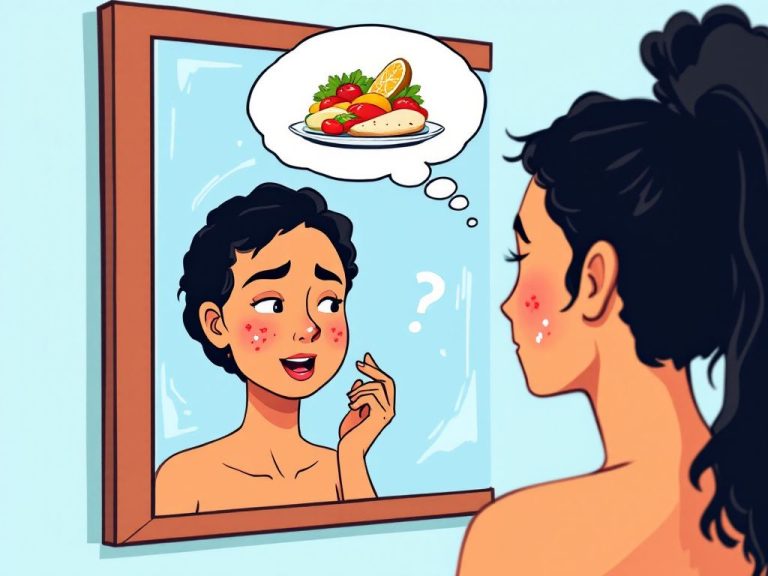Hey there, struggling with acne on places that aren’t your face? You’re not alone. Body acne can be a real nuisance, and it’s more common than you’d think. Let’s dive into the ins and outs of body acne basics, how it differs from other acne types, and most importantly, what you can do about it. But first, let’s get comfy; this chat is about feeling better in your skin and getting to know what’s going on with it.
Table of Contents
ToggleWhat’s the Deal with Body Acne?
Body acne is a funny thing—well, not funny in the way that makes us laugh, but you know what I mean. It sneakily appears where we least expect it or want it, like the back, chest, shoulders, and even the butt. Like facial acne, body acne happens due to clogged pores, but the reasons can be different. Trust me, knowing why this happens can be your first step to showing those stubborn spots the door.
The Basics of Body Acne
Let’s break it down a little. Think of your skin like a big airport with lots of little runways—or in this case, pores. Sometimes, those runways get jammed up with dead skin cells, oil (thanks, sebum), or bacteria. When that happens, we get acne. And if you’re active or it’s steamy outside, sweat can join the party, making matters worse.
Why Body Acne Happens
Some of us might conjure thoughts of hot, sweaty days at the gym or maybe those long hikes where every pore feels like it’s working overtime. Sweat isn’t the bad guy here, but if it hangs around for too long, it can set off a chain reaction. Imagine sweat mixing with oils and sticking around in tight spandex. Not quite the trio we’d want. Also, hormone changes can play a sneaky role—yes, puberty, but also things like stress and diet.
Non-Facial Acne: It’s a Thing
Body acne, often dubbed as non-facial acne, needs a bit of a different approach than the breakouts on our face. Different types of skin, right? Different rules might apply. It’s thicker; it gets more pressure from clothes and doesn’t really get to breathe. Imagine wearing a stuffy coat all day—how fresh would your face feel? Exactly.

The Enemies: What Trigger Body Acne?
Understanding body acne involves knowing your triggers. Here are some usual suspects:
- Tight Clothing: Think tight, synthetic fabrics. They trap heat and moisture, turning your skin into a breeding ground.
- Sweat: Again, not the villain by itself, but a trigger for many.
- Hormones and Stress: These really love joining a breakout party uninvited.
- Diet: You’ve probably heard this a million times, but there’s truth in it. High glycemic foods or dairy might lead to breakouts for some people. Everyone’s different—worth seeing if it’s your thing.
- Medications: Some ingredients might not be on your side. Always check!
Managing and Preventing Body Acne
Now for the good stuff: solutions. Here’s how you can manage and take proactive steps against body acne. It’s not about quick fixes, but more about adopting habits that help clear your skin over time.
Step-by-Step Body Treatment Regimen
- Shower Post-Workout: Always hitting the showers after any sweaty activity. Letting sweat dry on your skin can lead to those clogged pores.
- Use Gentle Exfoliants: Forget harsh scrubs. Gentle is the magic word here. Look for products with salicylic acid or glycolic acid. They sneak into pores, helping dissolve what’s clogging them.
- Pick Clean, Loose Clothing: Choose clothes made from breathable fabrics like cotton, especially when working out.
- Moisturize Wisely: Non-comedogenic moisturizers are your buddies here—they won’t block your pores but will still give your skin the hydration it needs.
- 5. **Consistent Skincare Routine: Whatever you choose, keep at it. Your skin craves and thrives on consistency.
Comparing Treatments: Finding What Works for You

Here’s a little comparison to at-a-glance remember your options. Sometimes visualizing helps make sense of things, see which path you might wanna wander down.
| **Product or Method** | **Perks** | **Considerations** |
|---|---|---|
| Salicylic Acid | Unclogs pores, anti-inflammatory | Might cause dryness, moisturizing crucial |
| Benzoyl Peroxide | Kills acne-causing bacteria | Can bleach fabrics, use carefully |
| Tea Tree Oil | Natural, anti-bacterial properties | Might be irritating for sensitive skin |
| AHAs (like Glycolic) | Exfoliates, softer skin texture | Sun sensitivity, remember sunscreen |
Things You Can Start Right Away
Alright, if you’re ready to make some changes right off the bat, here are a few simple things you can do. No overhauls or expensive purchases are necessary. Sometimes the secret is in the small, steady steps.
- Change Your Sheets: For real. You wouldn’t let dirty shirts stack up, right? Clean bedding makes a real difference.
- Watch the Laundry: Use hypoallergenic detergents. Anything too harsh can irritate the skin. Less fragrance, the better.
- Stay Mindfully Hydrated: Water helps flush things out. Simple but super effective. Give it a go!
Embracing Your Skin and Staying Informed

Remember, battling body acne doesn’t mean battling yourself. It’s all about finding what works for you, and not letting those annoying breakouts get a front seat. Understanding body acne basics helps pave the way to clearer skin. You might not solve it overnight, but you’ll get there in good time with the right advice and a little patience.
Listen to Your Skin
Your body speaks, even through the acne. It might be giving signals about stress or diet, or just needing more TLC. It’s about interpretation and understanding. Sometimes, acne might just be a nudge to pay attention to something larger at play, so keep an ear—and eye—out.
Common Mistakes to Sidestep
To wrap things up, here’s a round-up of easy missteps people commonly make. Avoiding these could save you a lot of trouble:
- Over-scrubbing: Might feel productive but often equals more harm. Imagine trying to rub out a spill with steel wool. Exactly, yeeesh.
- Spot Triggers: Over-indulging in what you know could break you out, thinking “just this once.” A domino effect worth skipping.
- Skipping Hydration: Dry skin can go into overdrive, producing more oil—not our goal here.
Body acne might be a tougher cookie, but with understanding and the right framework, clear skin can be closer than it feels. It’s the small steps, along with a sprinkle of humor and a good measure of self-compassion, that’ll make the difference. We’re in this together!
Frequently Asked Questions
What is body acne?
Body acne is a skin condition that occurs when the pores on the body become clogged with dead skin cells and excess oil (sebum), leading to the formation of pimples, including whiteheads, blackheads, papules, pustules, and cysts. It can appear on various areas such as the upper back, chest, shoulders, neck, and upper arms[1][3][5).
What causes body acne?
Body acne can be triggered by several factors, including hormonal fluctuations, excessive oil production, bacterial activity, and the buildup of dead skin cells. Other contributing factors include genetics, stress levels, exposure to sunlight, use of oil-based cosmetics, and certain foods like high glycemic foods. Additionally, lifestyle factors such as tight clothing, sweaty clothes, and the use of androgenic products can also play a role[1][2][5).
How can I manage and treat body acne?
To manage body acne, it is essential to establish a suitable skincare routine that includes proper cleansing and exfoliation. Use gentle cleansers and exfoliating products, such as those containing benzoyl peroxide or salicylic acid, to prevent breakouts. Topical retinoids can also be effective. Additionally, moisturizing with non-comedogenic products and protecting the skin from the sun with a broad-spectrum sunscreen can help. For severe cases, consulting a dermatologist for prescription treatments may be necessary[1][2][5).
How can I prevent body acne from worsening?
To prevent body acne from worsening, avoid using harsh soaps or scrubs, and refrain from using loofahs or sponges that can spread bacteria. Wear loose, clean clothing to reduce friction and sweating. Shower regularly, especially after exercising, and remove sweaty clothing promptly. Also, ensure that your hair and body products are non-comedogenic to avoid clogging pores[3][5][2]).
References







